This site uses cookies so that we can provide you with the best possible user experience. The information about cookies is stored in your browser and performs functions such as recognizing you when you return to our website and helping our team understand the sections of the site that you find most interesting and useful.
28.01.2021
Composite materials
It is during the 20th Century that aviation has mainly being developed. Originally, airplanes were made of wood and canvas, which were easy-to-find and lightweight materials.
During the World War I, flight techniques evolved. Problems and needs of future aircraft could be identified and understood. In the years following the war, materials used for construction changed to aluminum which became an important resource.
There are different reasons for this change. On the one hand, we no longer depend on a natural material of varying quality and, on the other hand, the machining of large surfaces with complicated shapes becomes easier.
During World War II and the arrival of jet aircraft, a new phenomenon has appeared requiring the use of metal, namely: aerodynamic heating of surfaces by the friction of the air when speed increases. For example, when inflight, an Airbus AXNUMX heats by XNUMX°C and the Concorde by approximately XNUMX°C.
Since then, alloys evolved and different metals appeared. Titanium, expensive and difficult to manufacture, allows the creation of robust parts, magnesium is used for very light parts.
Although the composite material is per definition nothing new, it is only quite recently that we design and build airplanes with this kind of material. The composite, such as carbon fibers, allows you to create large parts with complicated shapes that are very resistant and light. It is possible to put the right material at the right place.
The Composite
Basic principle
By definition, a composite material is an assembly of two elements having no interest individually to create a new material. Reinforced concrete, dental amalgam or even our bones are, for example, composites. For the structure of an airplane, we will take these two elements:
Fabric: This is obtained by different materials such as glass or carbon. We create a thin fiber that we can weave. The fabric can be omni or multi-directional. The directions of the fiber make it possible to define in which way the element will be the most resistant.
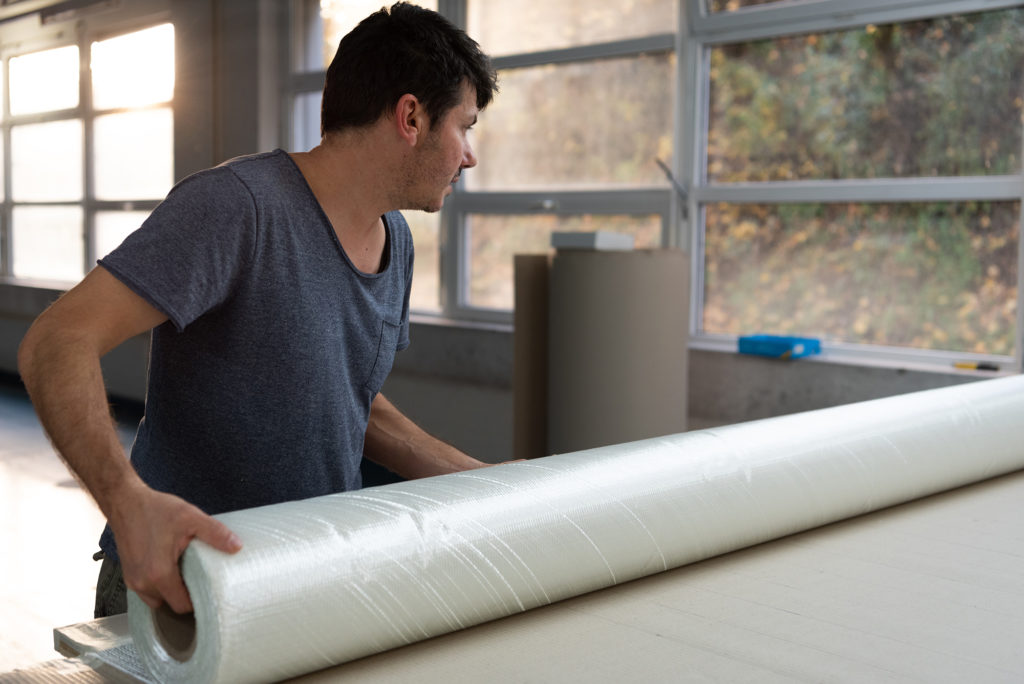
A resin : It is a more or less viscous liquid that is used as a binding agent.
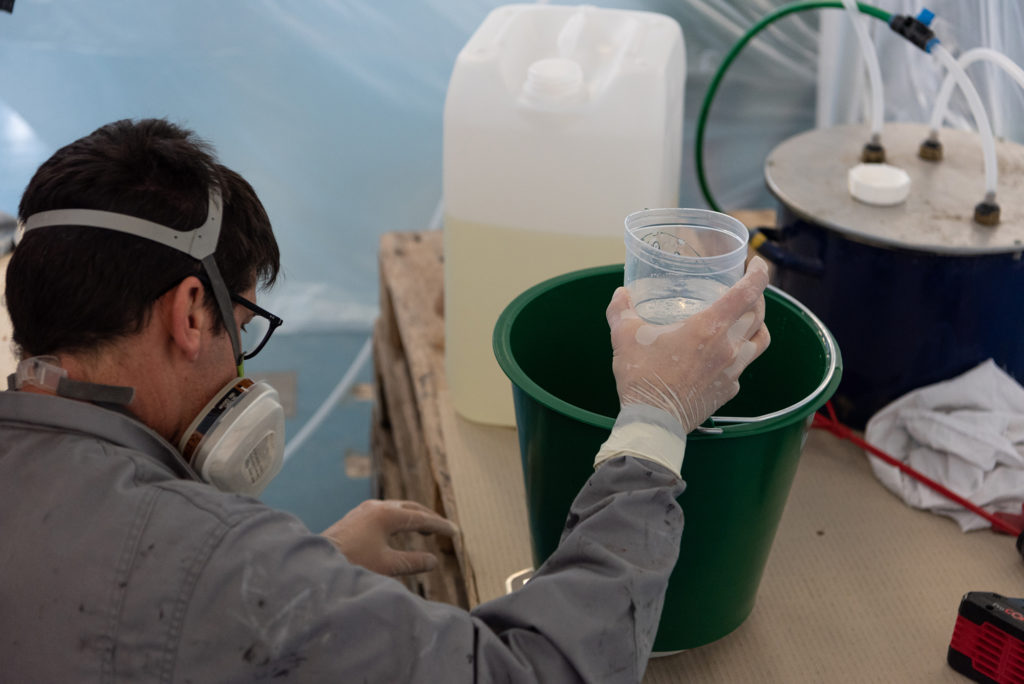
To create a part, you have to take the fabric and place it as desired. You can put many layers and choose the directions in which you want the resistance. Then, by different methods, the fiber will be coated with resin. This will surround the fabric, serve as a glue and the part will become a new material.
UR-1 aircraft
Our racing plane UR-1, will be created with many parts in composite material such as the fuselage or the wing spar. Here is a detail on its manufacture:
After having designed and made our calculations on an engineering software, we created a mold of the fuselage in expansive foam coated by a thickened resin. Thanks to the resin, we were able to refine the angles and work on details.
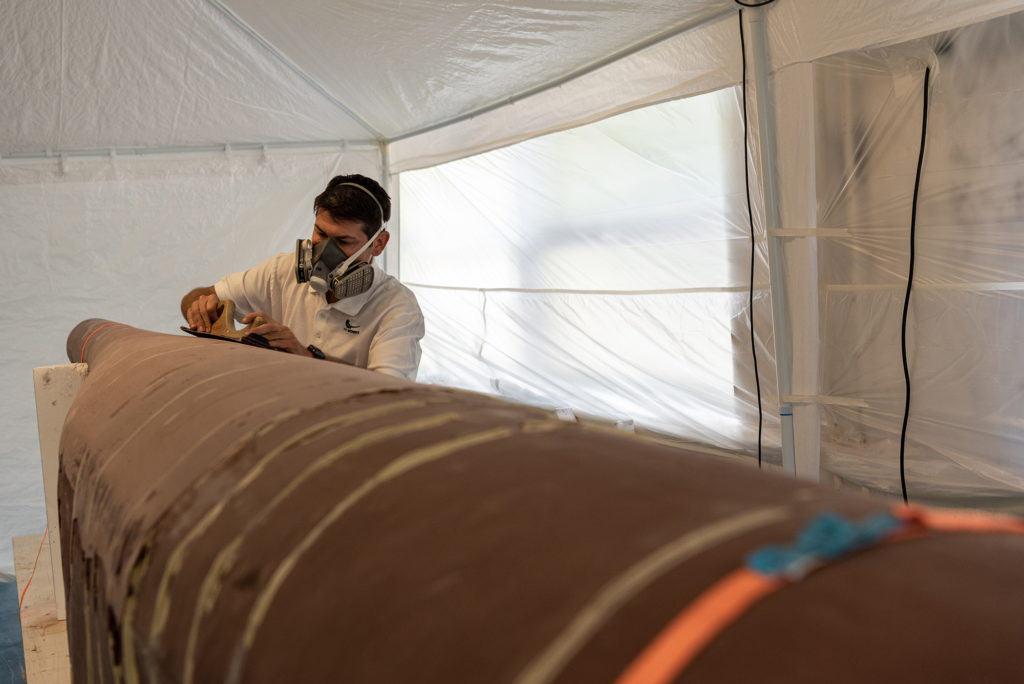
Once the male mold done, we decided to do a mock-up: namely a cheap fiberglass fuselage. There are different reasons for this, in particular to allow the discovery of small problems on the mold but also to be able to test the fuselage in real size: integration of the equipment, visibility test for the pilot etc ...
To do this, we split the fuselage in half and applied four coats of fiberglass.
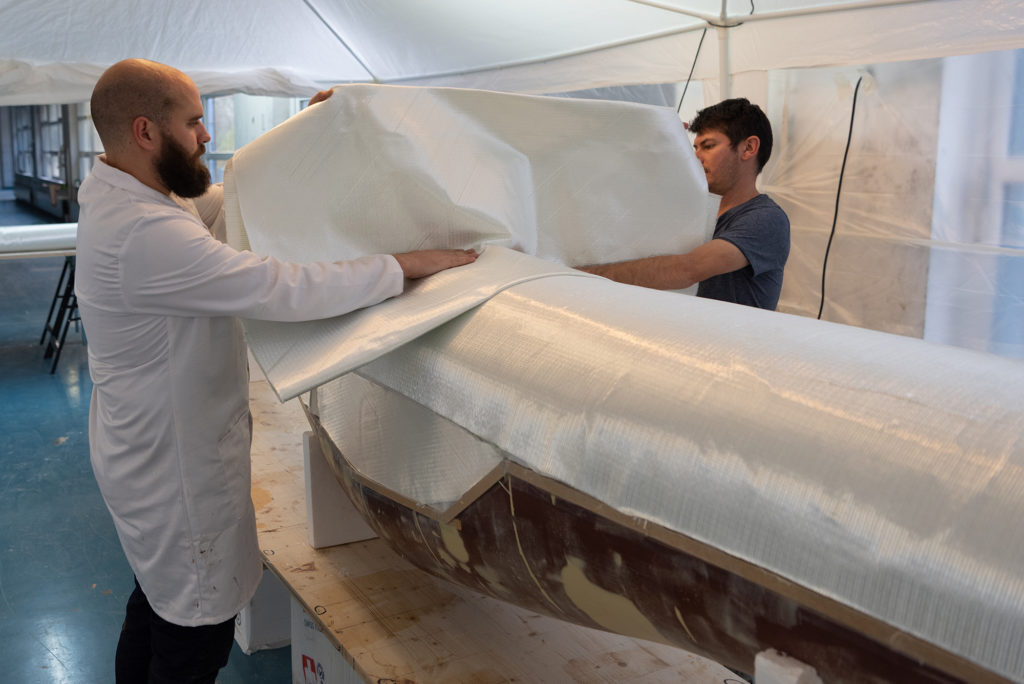
Once the fiber applied, we added material to facilitate the passage of the resin along the fuselage then put everything under vacuum for 24 hours in order to expel all of the air.
The freshly mixed resin was then pumped through the fibers to create the fiberglass mock-up.
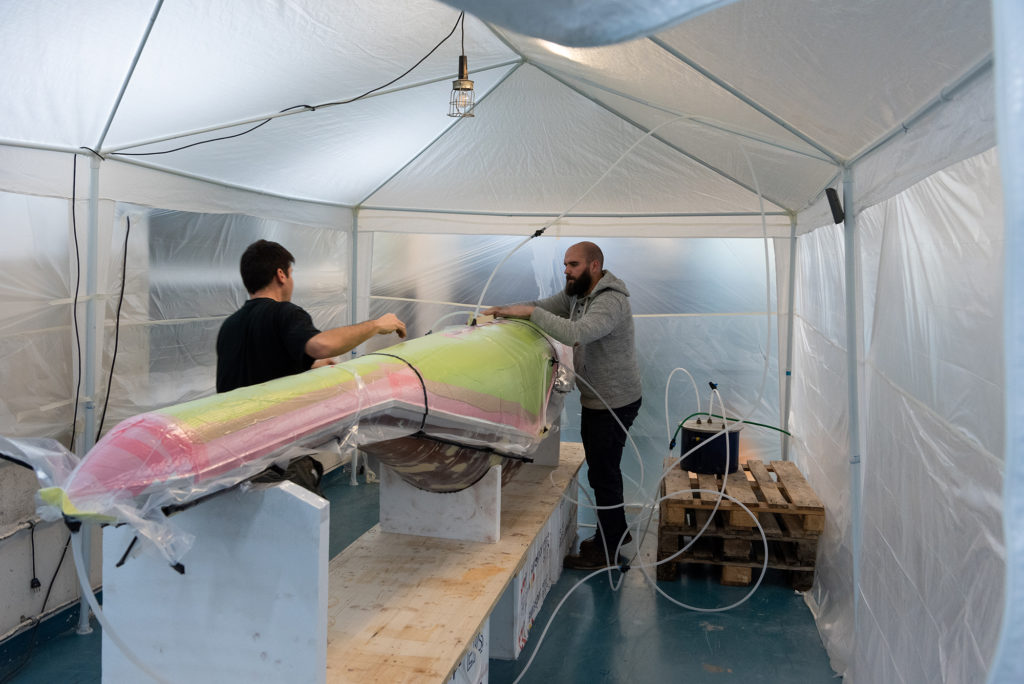
Now the resin hardened, we can remove the female fiber mold from the male foam mold. We then have a fiberglass fuselage.
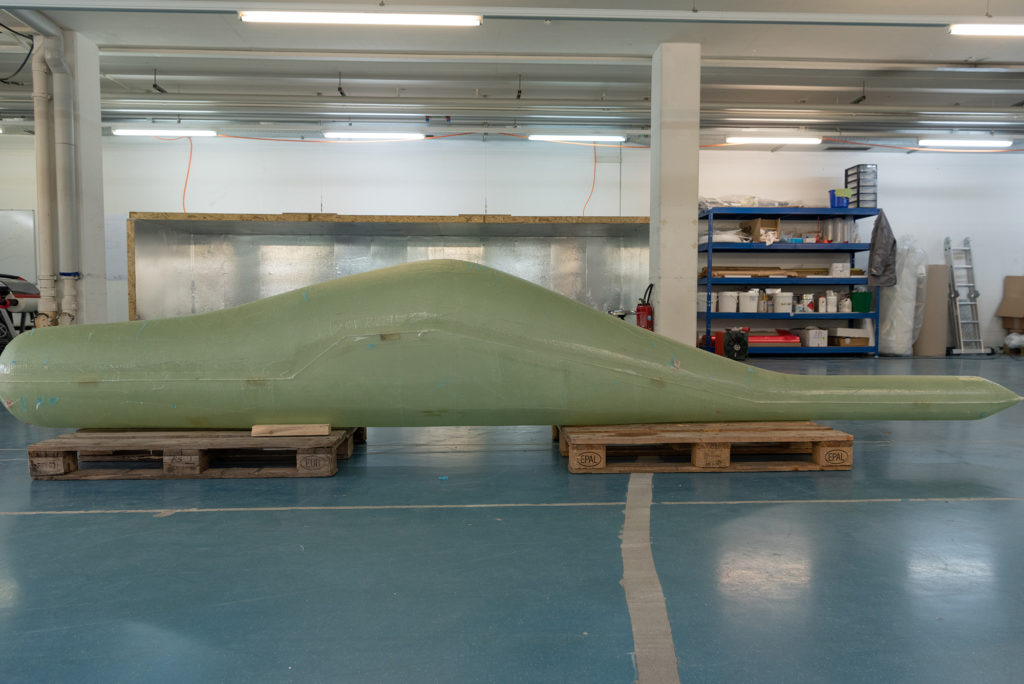
It is now possible to work on it, make cuts and various tests.
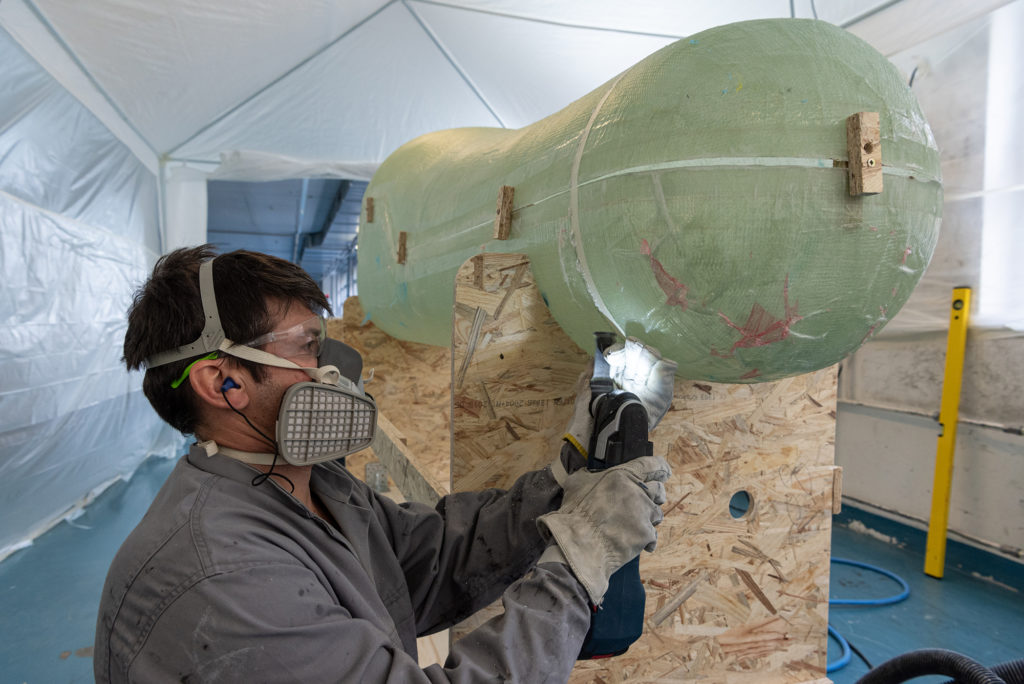
However, our plane will be made of carbon fiber. The construction process will be similar. But before that, our expert in composite material performs various tests in order to choose the right fabric or the right mixture of resin.
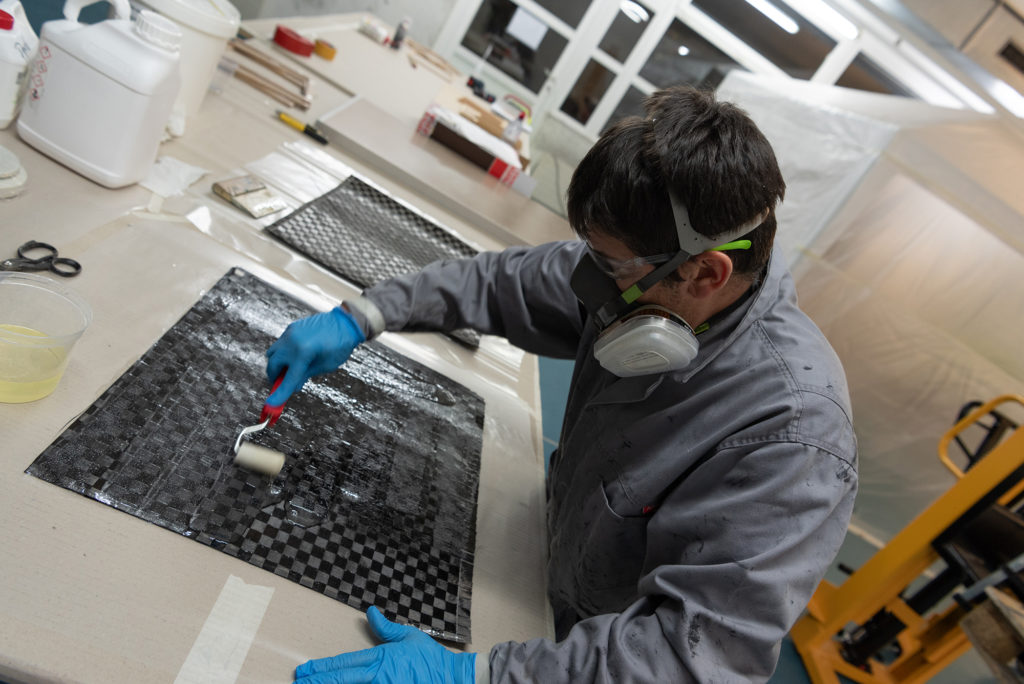
Here's a time-lapse video of the entire production process:
